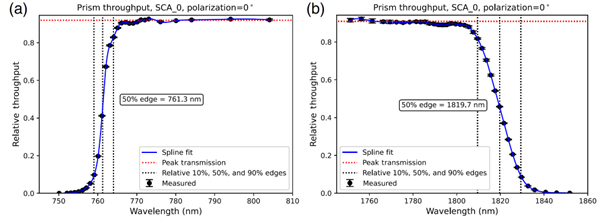Sponsored by Photon etcReviewed by Olivia FrostDec 6 2024
The Roman Space Telescope's Grism and Prism assemblies enable slitless, multi-object spectroscopy across its wide-field instrument. These elements are crucial for surveys aiming to explore the growth and cosmological history of the universe.
Instruments such as the laser line tunable filter (LLTF) are used for precise throughput and bandpass edge measurements of optical components between 800-1800 nm.
The test setup, designed by a team of experts at the Goddard Space Flight Center team (Bray et al.), ensures redshift accuracy measurements of millions of cosmic objects. This high-precision setup supports the telescope’s goals in dark energy research and exoplanet exploration.
Introduction
The Nancy Grace Roman Space Telescope addresses key astrophysical questions such as understanding exoplanet demographics and probing models of dark energy and cosmological acceleration. One of its primary scientific objectives is to measure spectroscopic redshifts and gather classification information for millions of objects over the mission's lifetime.
Integral to the success of this mission are the Grism and Prism assemblies, which are critical spectroscopic components aboard the telescope. These optical assemblies enable accurate redshift measurements by dispersing light into its spectral components. Therefore, precise characterization of their total throughput and bandpass edges, particularly in the wavelength range of 800 nm to 1800 nm, is essential to ensure accurate astrophysical results.
Tunable Source for Characterizing Features of Grism and Prism Assemblies
To accurately assess the Grism and Prism assemblies' total throughput and bandpass edges, NASA researchers developed a test setup combining a supercontinuum source with Photon etc.’s laser line tunable filter. This configuration creates a narrowband tunable light source for precise spectral measurements.
The testbed is further equipped with:
- An upstream reference detector and Fourier-transform spectrometer to account for any fluctuations in the supercontinuum source, ensuring stable and accurate readings.
- A custom mask is designed to restrict the incident light to specific regions of the pupil. This allows for proper normalization between optic-in and optic-out measurements.
- A hexapod at the downstream focal point, designed to hold measurement devices such as cameras, power meters, and integrating spheres, depending on the requirements of the test being performed.
Below are the schematic of the test bed and a sample of the results from the bandpass edge characterization of the Prism assembly.

Figure 1. A simplified top-down view of the setup used to measure the spectral properties of the RST Grism and Prism assemblies. Image Credit: Article
A typical example of the results obtained by the Goddard Space Flight Center team showing results of bandpass edge measurements for the prism is presented in figures 2 a and b below.

Figure 2. Two plots illustrating the shape of the Prism transmission near (a) the blue and (b) red edges for a single polarization state at the on-axis position. Image Credit: Article
Why LLTF?
- The high resolution Bragg gratings inside the LLTF produce a narrow emission line that is suitable for precise measurements of the rapidly-changing throughput near the Prism bandpass edges.
- The wide spectral response from 700nm to 1900nm available from a single tunable filter streamlines the experimental setup
Other Applications of the LLTF in Non-Destructive Testing
It allows for spectral and angular characterization of light scattered by thin-film f ilters from 400 to 1650 nm. The setup achieves precise scattered light measurements, making it valuable for assessing optical performance, particularly in complex filters used in applications like Earth observation.
Accurate optical detector calibration is essential for reliable optical characterization in metrology. This paper introduces a novel calibration method using a supercontinuum (SC) laser paired with a laser line tunable filter (LLTF), providing tunable light from 800 to 2000 nm. The setup offers improved precision, higher power, and narrower spectral bandwidth source uncertainty to approximately 2.3%, outperforming traditional lamp-based systems.

This information has been sourced, reviewed and adapted from materials provided by Photon etc.
For more information on this source, please visit Photon etc.